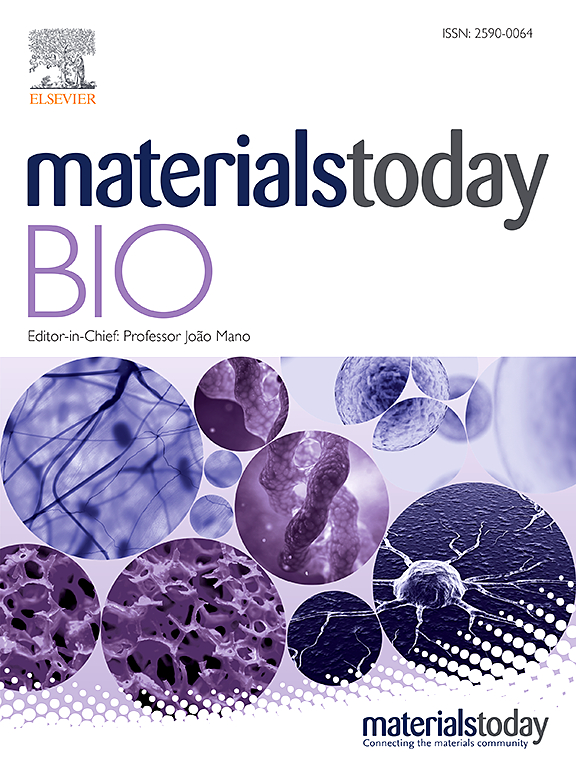Engineering a dynamic extracellular matrix using thrombospondin-1 to propel hepatocyte organoids reprogramming and improve mouse liver regeneration post-transplantation
IF 8.7
1区 医学
Q1 ENGINEERING, BIOMEDICAL
引用次数: 0
Abstract
Hepatocyte organoids (HOs) hold significant potential for constructing bioartificial liver construction, toxicology research, and liver failure therapies. However, challenges such as difficulties in induced pluripotent stem cells (iPSCs) harvest and differentiation, safety concerns of tumor-derived matrices, and limited primary cell regulation hinder clinical applications. In this study, we developed a non-tumor-derived decellularized extracellular matrix (dECM) system with tunable mechanical properties and viscoelasticity to enhance stem cell proliferation and organoid functionality using thrombospondin-1 (THBS1). Nanoindentation and transcriptomic analysis revealed that THBS1 mediates adaptation and remodeling between organoids and ECM proteins, exhibiting native tissue-like viscoelasticity and up-regulated reprogramming transcriptional factors KLF4 and SOX2 via the YAP/TAZ pathway. Transplanting HOs presenting reprogramming effects into a 70 % hepatectomy model demonstrated improved liver regeneration, underscoring the potential of the THBS1-based dynamic ECM system in organoids manipulation and liver regeneration.

求助全文
约1分钟内获得全文
求助全文
来源期刊

Materials Today Bio
Multiple-
CiteScore
8.30
自引率
4.90%
发文量
303
审稿时长
30 days
期刊介绍:
Materials Today Bio is a multidisciplinary journal that specializes in the intersection between biology and materials science, chemistry, physics, engineering, and medicine. It covers various aspects such as the design and assembly of new structures, their interaction with biological systems, functionalization, bioimaging, therapies, and diagnostics in healthcare. The journal aims to showcase the most significant advancements and discoveries in this field. As part of the Materials Today family, Materials Today Bio provides rigorous peer review, quick decision-making, and high visibility for authors. It is indexed in Scopus, PubMed Central, Emerging Sources, Citation Index (ESCI), and Directory of Open Access Journals (DOAJ).
 求助内容:
求助内容: 应助结果提醒方式:
应助结果提醒方式:


